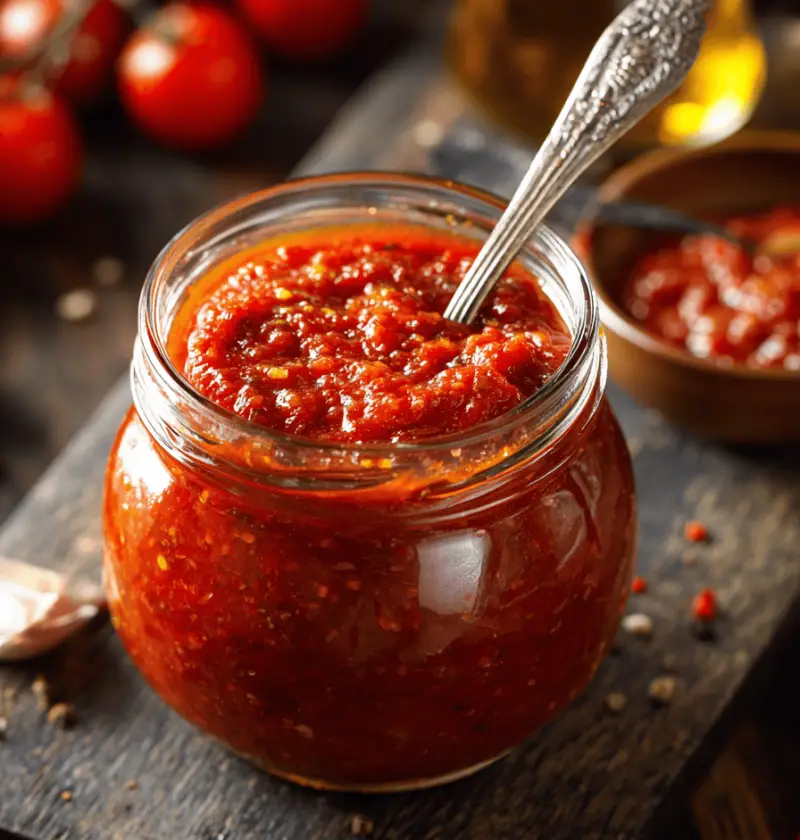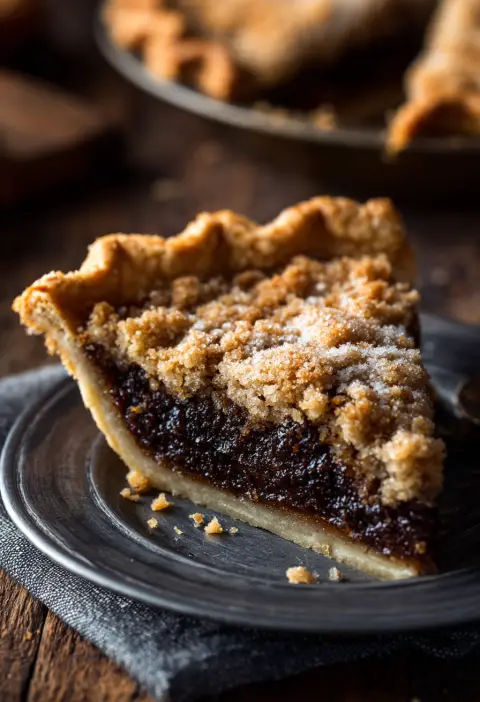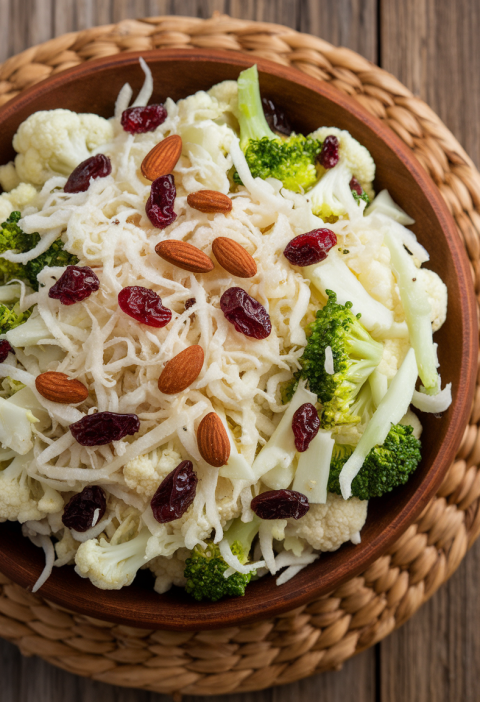Marinara Sauce Recipe
This easy, classic homemade marinara sauce recipe brings bright tomato flavor, fragrant herbs, and just a hint of sweetness to your pasta table in under an hour.
When I first started cooking decades ago, a jar was my go-to—no shame in that—yet I soon discovered how much richer and comforting a simple from-scratch marinara sauce can be. What sets this Italian staple apart is the freshness of the tomatoes; I often reach for canned San Marzano when summer’s bounty isn’t available, but a handful of ripe plum tomatoes works wonders too. Lightly simmered with olive oil, garlic, and basil, it feels like a cozy hug for any bowl of pasta—and yes, it’s healthier than most store-bought versions. Plus, you’ll feel proud serving a sauce that’s truly homemade, right off your stove. Whether I’m hosting friends on a casual Sunday evening or packing a batch for meal prep, this sauce shines every time—simple, easy, and classic. Ready to see why it’s become a family favorite?
Why You’ll Love This Recipe
– No-fuss method: just one pot, minimal chopping, zero complicated steps.
– Fresh flavor: sun-ripened tomatoes and basil for that vibrant, homemade taste.
– Ready fast: simmer time fits into a 40-minute window—even weeknights.
– Versatile: perfect over spaghetti, but also lovely with meatballs or as pizza sauce.
– Pantry-friendly: uses shelf-stable ingredients you already have on hand.
– Health boost: olive oil, garlic, and herbs—no artificial preservatives.
– Crowd-pleaser: mild enough for kids, rich enough for sauce aficionados.
– Freezer-friendly: batch cook and freeze in portions for busy days.
Ingredients for the Marinara Sauce Recipe
– 2 tablespoons extra-virgin olive oil (California Olive Ranch is a go-to)
– 4 cloves garlic, thinly sliced (sub granulated garlic in a pinch)
– 1 medium yellow onion, finely diced (optional, for deeper flavor)
– 28 ounces crushed tomatoes (San Marzano, fire-roasted, or your favorite brand)
– 6–8 fresh basil leaves, torn (or 1 teaspoon dried basil)
– 1 teaspoon dried oregano (or 1 tablespoon fresh, finely chopped)
– 1 teaspoon sugar (or honey, to cut acidity)
– ½ teaspoon red pepper flakes (optional, for a subtle kick)
– Salt and freshly ground black pepper, to taste
Tip: If using fresh plum tomatoes in season, blanch and peel them before crushing for maximum sweetness.
Directions
1. Warm the oil: In a heavy-bottomed pot over medium heat, swirl in olive oil until shimmering—about 1 minute.
2. Sauté aromatics: Add garlic (and onion, if using) and stir for 2–3 minutes until fragrant and lightly golden; avoid browning the garlic or it’ll taste bitter.
3. Add tomatoes: Pour in crushed tomatoes, scraping up any bits stuck to the pot—those bits are pure flavor gold.
4. Season it: Sprinkle sugar, oregano, red pepper flakes, and a generous pinch of salt and pepper. Stir to blend.
5. Simmer gently: Lower heat to maintain a gentle bubble. Cover partially and let simmer for 20–25 minutes, stirring occasionally—enough to meld flavors but not so long that the color dulls.
6. Fresh finish: Stir in basil leaves off heat. Give it a quick taste and adjust salt, pepper, or a bit more sugar if tomatoes are too tart.
7. Puree (optional): For a smoother texture, use an immersion blender directly in the pot, pulsing until just the right consistency—or leave it chunky, your call!
8. Keep warm or cool: Serve immediately over hot pasta—spaghetti cooks al dente in about 8–10 minutes—or let sauce cool to room temperature before storing.
Servings & Timing
– Yield: About 4–5 cups of sauce (serves 4–6 generously)
– Prep Time: 10 minutes (15 if you peel fresh tomatoes)
– Cook Time: 25 minutes simmering
– Total Time: Roughly 35–40 minutes from start to finish
Variations
– Spicy Marinara: Double the red pepper flakes and add a diced jalapeño for a Tex-Mex flair.
– Creamy Tomato: Stir in ¼ cup heavy cream or full-fat Greek yogurt for a pink-hued twist.
– Roasted Garlic: Swap fresh garlic for roasted cloves to deepen the flavor profile.
– Veggie Boost: Stir in finely chopped zucchini or grated carrot during simmering for extra nutrition.
– Herbed Blend: Swap basil for fresh thyme and rosemary for a Provencal feel.
Storage & Reheating
Refrigerate in airtight containers for up to 5 days—warm gently on the stove over low heat, adding a splash of water if it thickens too much. Freeze in 1-cup portions (seal in freezer bags laid flat for space-saving) for up to 3 months. To thaw, place in the fridge overnight or microwave briefly before warming on the stove. Make-ahead tip: Freeze individual jars for quick weeknight dinners.
Notes
Over the years, I’ve learned that a low, steady simmer turns a simple tomato sauce into something silky and rich—acidity softens, sweetness emerges. If the sauce tastes flat, a splash of red wine or a few grated parmesan rind pieces can lift the flavor. I often swap refined sugar for maple syrup; it adds subtle caramel notes without being obvious. For extra silkiness, stir in a small knob of butter off heat. Always add fresh herbs at the end—cooking them too long mutes their bright, green aroma.
FAQs
Q: Can I use fresh tomatoes instead of canned?
A: Absolutely—use about 2 pounds of ripe plum or Roma tomatoes. Blanch in boiling water, peel, crush by hand or in a food processor, then follow the recipe.
Q: How do I make this sauce thicker?
A: Let it simmer uncovered for an extra 5–10 minutes so excess liquid evaporates, or stir in a spoonful of tomato paste at the start for added body.
Q: Is this marinara vegan?
A: Yes, as written it’s entirely plant-based. Swap sugar for agave if you need strict vegan standards, though most refined sugars are fine.
Q: Can I prepare the sauce in a slow cooker?
A: Sure—brown garlic and onion on the stovetop, then transfer everything to a slow cooker on low for 4 hours, stirring halfway through.
Q: How can I prevent my sauce from tasting bitter?
A: Avoid overcooking garlic until deeply brown; stir in a pinch of sugar or a piece of carrot during cooking to balance acidity naturally.
Q: What pasta shapes pair best?
A: Spaghetti, linguine, or penne soak up this sauce beautifully—trenette or bucatini are lovely for a heartier bite.
Q: Can I double the recipe?
A: Yes, just use a larger pot and watch the simmer time; a fuller pot may need an extra few minutes so flavors meld.
Q: How do I spice it up for winter?
A: Add a pinch of nutmeg, swap half the tomatoes for pumpkin puree, and finish with fresh sage for a cozy seasonal twist.
Conclusion
This Marinara Sauce Recipe is a simple, classic way to brighten any pasta night—easy enough for busy weeknights, special enough for dinner guests. Give it a try, and let me know how you tweak it; I love hearing your twists! For more sauce inspiration, check out my Homemade Pesto or Creamy Mushroom Sauce next.

Marinara Sauce Recipe
Ingredients
- 2 tablespoons extra-virgin olive oil California Olive Ranch is a go-to
- 4 cloves garlic thinly sliced (sub granulated garlic in a pinch)
- 1 medium yellow onion finely diced
- 28 ounces crushed tomatoes San Marzano, fire-roasted, or your favorite brand
- 6-8 leaves fresh basil torn (or 1 teaspoon dried basil)
- 1 teaspoon dried oregano (or 1 tablespoon fresh, finely chopped)
- 1 teaspoon sugar (or honey, to cut acidity)
- 1/2 teaspoon red pepper flakes (optional, for a subtle kick)
- Salt and freshly ground black pepper to taste
Instructions
- In a heavy-bottomed pot over medium heat, swirl in olive oil until shimmering—about 1 minute.
- Add garlic (and onion, if using) and stir for 2–3 minutes until fragrant and lightly golden; avoid browning the garlic or it’ll taste bitter.
- Pour in crushed tomatoes, scraping up any bits stuck to the pot—those bits are pure flavor gold.
- Sprinkle sugar, oregano, red pepper flakes, and a generous pinch of salt and pepper. Stir to blend.
- Lower heat to maintain a gentle bubble. Cover partially and let simmer for 20–25 minutes, stirring occasionally.
- Stir in basil leaves off heat. Give it a quick taste and adjust salt, pepper, or a bit more sugar if tomatoes are too tart.
- For a smoother texture, use an immersion blender directly in the pot, pulsing until just the right consistency—or leave it chunky, your call!
- Serve immediately over hot pasta—spaghetti cooks al dente in about 8–10 minutes—or let sauce cool to room temperature before storing.







